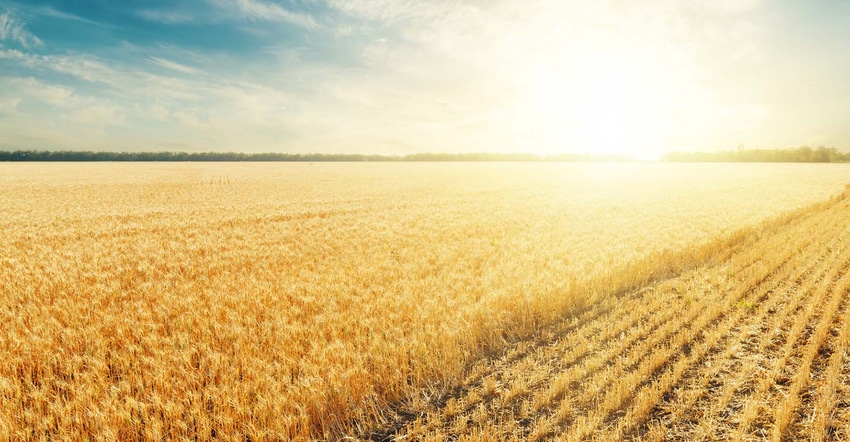
Crop scouts this week confirmed that North Dakota will be harvesting less spring wheat than last year, but they also found the losses may not be as big as once thought.
After estimating yields on about 500 fields throughout the state and a few in Montana and South Dakota, the tour came up with an average spring wheat yield of 38.1 bushels per acre, which would be down from last year’s tour average of 45.7. The durum average was 39.7 bpa versus last year’s tour average of 45.4.
The lower yields were due to hot, dry conditions this spring and summer when the crop was growing. At times then temperatures topped 100 degrees Fahrenheit. Also, the National Weather Service still has much of western North Dakota in extreme drought.
For Dave Green, who viewed many of the fields and coordinated the tour as executive vice president of the Wheat Quality Council, the crop conditions were a little better than expected.
“There is a lot of good wheat in the eastern half of the state,” he said.
Fields in the northwest also had decent wheat.
Wheat in the southwest corner of North Dakota was in the worst shape, as expected, with many fields cut and baled into hay by the time the crop scouts arrived. The tour also found a number of poor fields in central North Dakota between Bismarck and Minot.
“We sent four cars to the southwest and we drove through some areas where every other one (field) was in a bale. But, nobody reported any baling or abandonment in any other part of the state,” said Green. “Our routes to the northwest came back with some pretty decent numbers.”
Last year, North Dakota harvested 5.85 million acres of spring wheat after planting 6 million.
The tour estimated wheat in the Red River Valley could average about 55 bpa, which Green said would be close to the average for that area.
Going forward, Green said mild temperatures are needed between now and harvest. Hot weather could shrivel kernels and lower test weights.
While the tour’s yield forecast is down from last year and from those of the past few years, Green said the numbers are not far from yields several years ago. He said that in North Dakota, 50-bushel wheat had been common in the Red River Valley, 35 in the prairie and 20 bushels in the western part of the state.
“I have been doing this for 38 years. So to me, this is a long way from a crop failure,” he said. “If I was to say do I feel a little better or a little worse after the tour, I would say I feel a little better.”
About the Author(s)
You May Also Like




